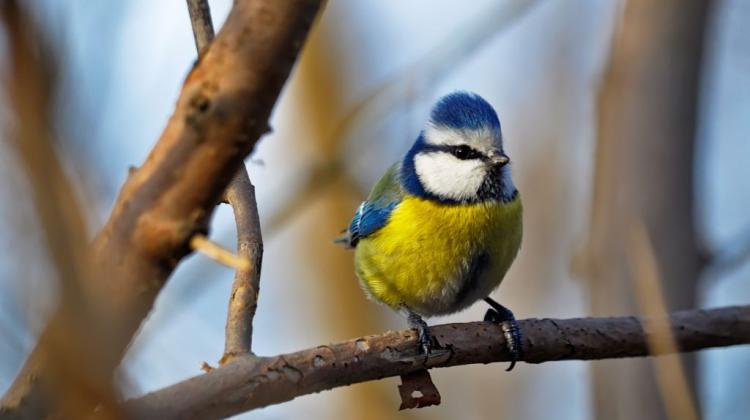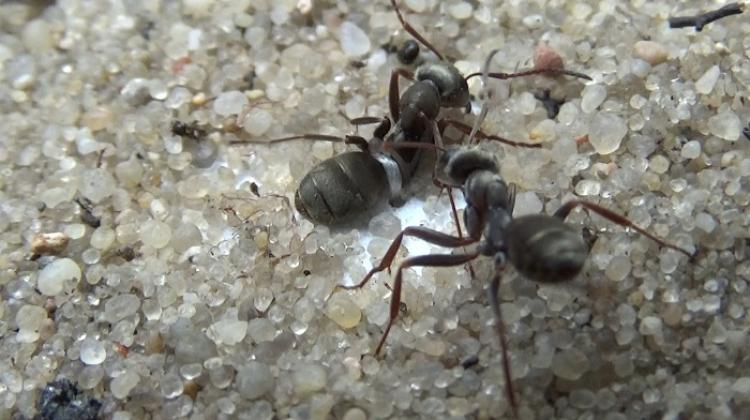The mystery of feather colour, or how tit helps create innovative paints
 Photo: Fotolia /
Photo: Fotolia /
It helps to find a partner, hide from predators, indicates the young with the greatest chance of survival. Scientists still do not know much about how the colour of feathers develops. Dr. Szymon Drobniak - by studying blue tits and sparrows - wants to shed new light on the matter, and help to create a new generation of paints.
The colour of plumage usually guides bird females when choosing a male. Bright colours are particularly attractive. "Only very fit males can maintain it, so having bright feathers is an opportunity to find a large number of partners" - told PAP Dr. Szymon Drobniak from the Jagiellonian University. But such plumage also has its downside: the more vivid the colour, the easier prey the male is for predators. "In general, however, it is an important signal for the female: the male is bright and still alive, which means he has good survival skills" - added Drobniak.
Besides, for some species the colour of feathers may provide camouflage. It is also a signal for parents informing of the condition their chicks. On the basis of the colour of the plumage, they can choose which chicks should be fed, because they have a better chance of survival.
Although there are many studies on the colour of a bird\'s plumage, almost all focus solely on measuring its parameters. As a result, still little it is known about how the colours of feathers develop, and how they are affected by the condition of birds and environmental factors. "Many studies indicate that different types of colour are a response to the availability of food or the condition of the individual. But we do not know how it happens" - noted the researcher.
As part of the National Science Centre grant, Dr. Drobniak intends to explain the mechanisms responsible for the formation of specific colours. With his team he will examine two species of birds: blue tit and sparrow. "Both species have a specific colour of plumage. Tits have yellow feathers on the breast and vivid blue - UV-reflecting - feathers on the head and tail. Sparrows - mostly brown - have black feathers on the throat, which indicate the quality of the male. We will use the example of these two species to study how the colours of their feathers form"- explained Dr. Drobniak.
These two species have been selected because different mechanisms are responsible for the formation of their coloration. The black colour of the sparrow comes from melanin that gives the colour of human hair. Yellow feathers in tits are coloured with carotenoids, found in yellow leaves or fruit. Blue feathers does not contain any dye; instead - due to their nanostructures - they reflect light in a very specific way, which is why we perceive them as shiny and blue. These are so-called structural colours.
The colour intensity depends on the amount of melanin and carotenoids and the regularity of the feather structure. "We do not know how birds decide how much carotenoids or melanin to allocate to feather in specific moments in life, and how this decision depends on its current health. However, the biggest mystery is how birds control the structure of feathers, which forms these beautiful shiny colours that we see, for example, on tits" - explained the researcher.
Interesting papers on the topic have been published by Spanish researchers who studied specific kinds of colour, occurring, for example, in magpies and jackdaws. Their feathers are black, but they have a shiny, rainbow-like gloss. This gloss sue to the fact that melanosomes - tiny particles containing black melanin - are arranged in a certain way, which causes shine and colourful iridescence of feathers. Physicists have created a model to determine how melanosomes should be arranged to achieve such colours, and biologists tested this hypothesis on real feathers.
"In our tits, shiny blue colour is formed not by the melanosomes, but by the spongy structure of the feathers, which generates colour. For now, however, is the great unknown, how exactly this colour forms. We plan to cooperate with physicists, because we want to - as in the case of black feathers - create a similar model for the feathers that do not contain melanin" - explained Dr. Drobniak.
In the experimental part of the project, researchers will examine feathers of these two species under electron microscope. First, they will cut the feathers into very small pieces, and then analyse their structures and how they depend on the condition of the birds.
But this is not the end. In the second part of the study, the researchers will test how the environment in which tits live, affects the colour. They will examine tits living in Sweden. Biologist from Poland, France, Spain, Great Britain and the Czech Republic will provide feathers of local tits to see how big variation is among the populations and how the environment and climate affects their colour.
"In the last phase of the project we will examine the colour of many different species of birds. We will obtain spectra of their feathers by measuring museum exhibits available in different countries. We will also use the database of bird feathers, maintained for many years by our co-worker. It includes data of 700 bird species" - revealed the researcher.
Research on feathers belong to basic research, but it may have specific practical applications. Based on mechanism of formation of shiny blue colour of tits\' feathers, scientists want to create a new generation of paints that will capture the colour blue better than the present paint. "A serious problem in the technology of colour is that some dyes are unstable and easily decompose under the influence of visible light and UV light. In this new technology there would be no pigment that could decompose under the influence of light, but a structure which would not be destroyed by light in any way. By controlling this structure we could generate specific colours and create very durable pigments. Our research therefore goes deeper and may have practical applications one day" - said Dr. Drobniak.
PAP - Science and Scholarship in Poland, Ewelina Krajczyńska
ekr/ mrt/
tr. RL
Przed dodaniem komentarza prosimy o zapoznanie z Regulaminem forum serwisu Nauka w Polsce.


















